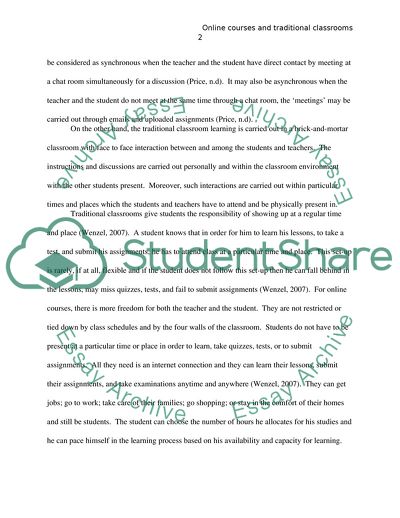Cite this document
(Two Mediums in Relation to Traditional Classroom and Virtual Instruction Case Study Example | Topics and Well Written Essays - 1250 words - 1, n.d.)
Two Mediums in Relation to Traditional Classroom and Virtual Instruction Case Study Example | Topics and Well Written Essays - 1250 words - 1. https://studentshare.org/education/1740951-comparecontrast-essay
Two Mediums in Relation to Traditional Classroom and Virtual Instruction Case Study Example | Topics and Well Written Essays - 1250 words - 1. https://studentshare.org/education/1740951-comparecontrast-essay
(Two Mediums in Relation to Traditional Classroom and Virtual Instruction Case Study Example | Topics and Well Written Essays - 1250 Words - 1)
Two Mediums in Relation to Traditional Classroom and Virtual Instruction Case Study Example | Topics and Well Written Essays - 1250 Words - 1. https://studentshare.org/education/1740951-comparecontrast-essay.
Two Mediums in Relation to Traditional Classroom and Virtual Instruction Case Study Example | Topics and Well Written Essays - 1250 Words - 1. https://studentshare.org/education/1740951-comparecontrast-essay.
“Two Mediums in Relation to Traditional Classroom and Virtual Instruction Case Study Example | Topics and Well Written Essays - 1250 Words - 1”. https://studentshare.org/education/1740951-comparecontrast-essay.


